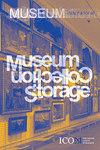“圣殿中的光”:Mouseion的影响和阿根廷布宜诺斯艾利斯国家美术馆房间里的新国际博物馆学
IF 0.4
4区 艺术学
0 ART
引用次数: 0
摘要
摘要本文分析了20世纪30年代阿根廷国家美术馆发生的变化。它成立于1895年,1933年搬到了一座新建筑,留下了19世纪收藏馆的混乱展示。新搬迁的博物馆随后展示了一种全新的博物馆学,这意味着其展示方式和艺术品选择发生了根本性的变化。负责这项改造的主要人员是其主管Atilio Chiáppori。作为Mouseion的狂热读者,他编辑了国家贝拉斯艺术博物馆(Boletín del Museo Nacional de Bellas Artes),在那里他发表了自己翻译成西班牙语的文章,供阿根廷公众阅读。我们的文章旨在了解国际博物馆办公室——国际博物馆理事会的直系祖先——和Mouseion在阿根廷的影响,并以国家贝拉斯艺术博物馆为例进行研究。我们将追溯本杂志在20世纪30年代所传达的辩论的影响,以便在我们今天所知的博物馆学诞生的背景下,以及在国际知识合作研究所等新生的多边组织中,更好地理解阿根廷的地位。除了研究博物馆的Boletín及其摄影档案外,我们还将深入研究Mouseion的页面和著名的1934年博物馆会议记录。通过与Chiáppori撰写的关于他担任博物馆馆长期间的回忆录《Luz en el Templo》一起回顾这些资料,我们将试图了解一座19世纪的精英博物馆如何转变为一个公共教育和辩论的场所。本文章由计算机程序翻译,如有差异,请以英文原文为准。
‘Light in the Temple’: The Influence of Mouseion and the New International Museology in the Rooms of the Museo Nacional de Bellas Artes in Buenos Aires, Argentina
Abstract This article analyses the changes that took place in the Museo Nacional de Bellas Artes (the National Museum of Fine Arts) of Argentina in the 1930s. Founded in 1895, it moved to a new building in 1933, leaving behind the chaotic display of the 19th-century pavilion that used to host its collections. The newly relocated museum then revealed a brand-new museography, which implied radical changes in its display methods and artwork selection. The main person responsible for this revamping was Atilio Chiáppori, its Director. An avid reader of Mouseion, he edited the Boletín del Museo Nacional de Bellas Artes, where he published articles – that he translated into Spanish himself – for the Argentinian public to read. Our article aims to understand the influence of the International Museums Office – International Council of Museum’s direct ancestor – and Mouseion in Argentina, taking the Museo Nacional de Bellas Artes as a case study. We will trace the influence of the debates conveyed by this magazine in the 1930s to better comprehend the place of Argentina within the context of the birth of museography as we know it today, and within newly born multilateral organisations like the International Institute of Intellectual Cooperation. Along with the study of the Museum’s Boletín and its photographic archives, we will also dig into Mouseion’s pages and the proceedings of the famous 1934 Muséographie conference. By reviewing these sources together with Luz en el Templo, the memoir written by Chiáppori about his time as a museum director, we will try to understand the transformation of a 19th-century museum for the elite into a place of public education and debate.
求助全文
通过发布文献求助,成功后即可免费获取论文全文。
去求助
来源期刊

MUSEUM INTERNATIONAL
ART-
CiteScore
0.60
自引率
0.00%
发文量
0
期刊介绍:
In its new revised form Museum International is a forum for intellectually rigorous discussion of the ethics and practices of museums and heritage organizations. The journal aims to foster dialogue between research in the social sciences and political decision-making in a changing cultural environment. International in scope and cross-disciplinary in approach Museum International brings social-scientific information and methodology to debates around museums and heritage, and offers recommendations on national and international cultural policies.
 求助内容:
求助内容: 应助结果提醒方式:
应助结果提醒方式:


